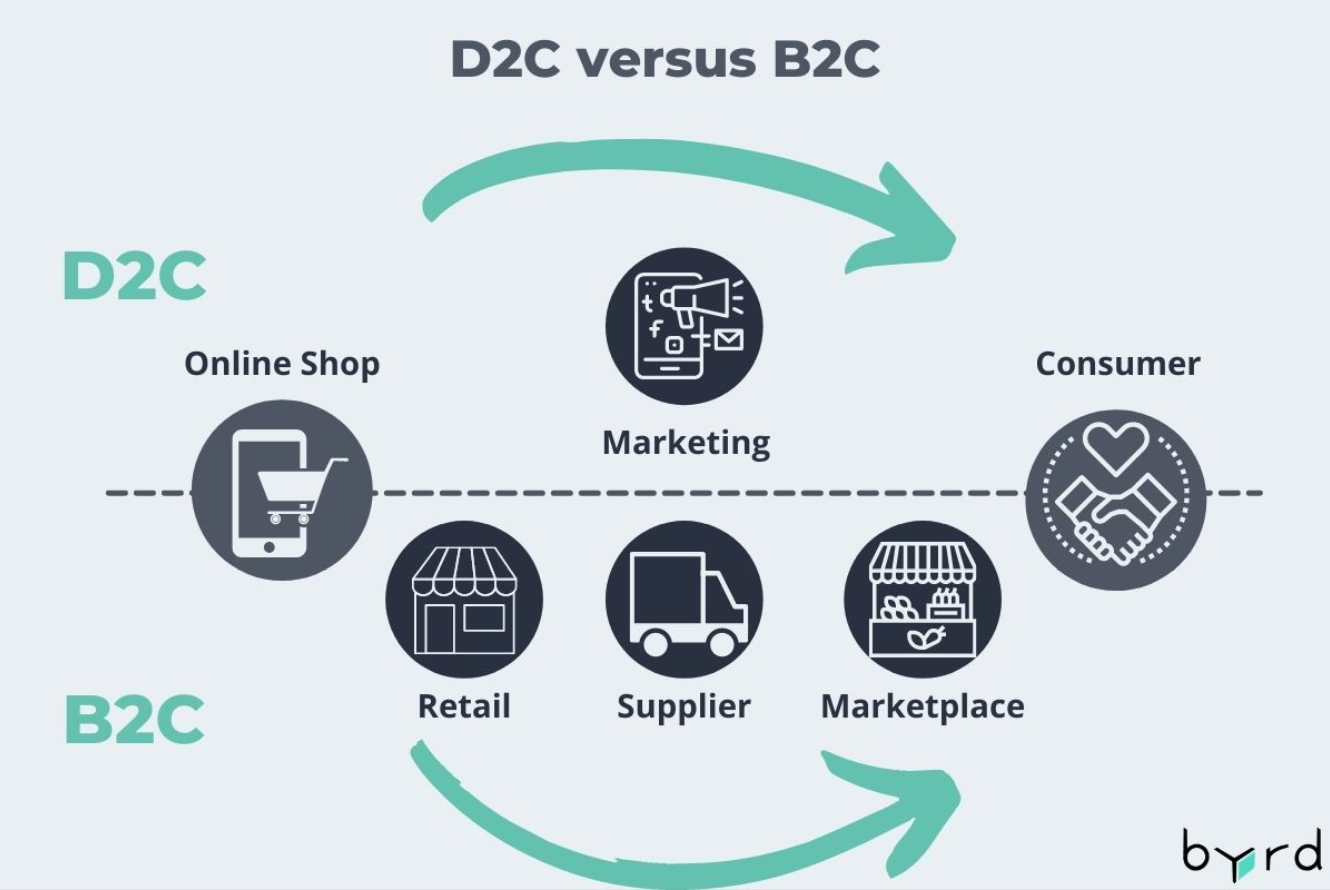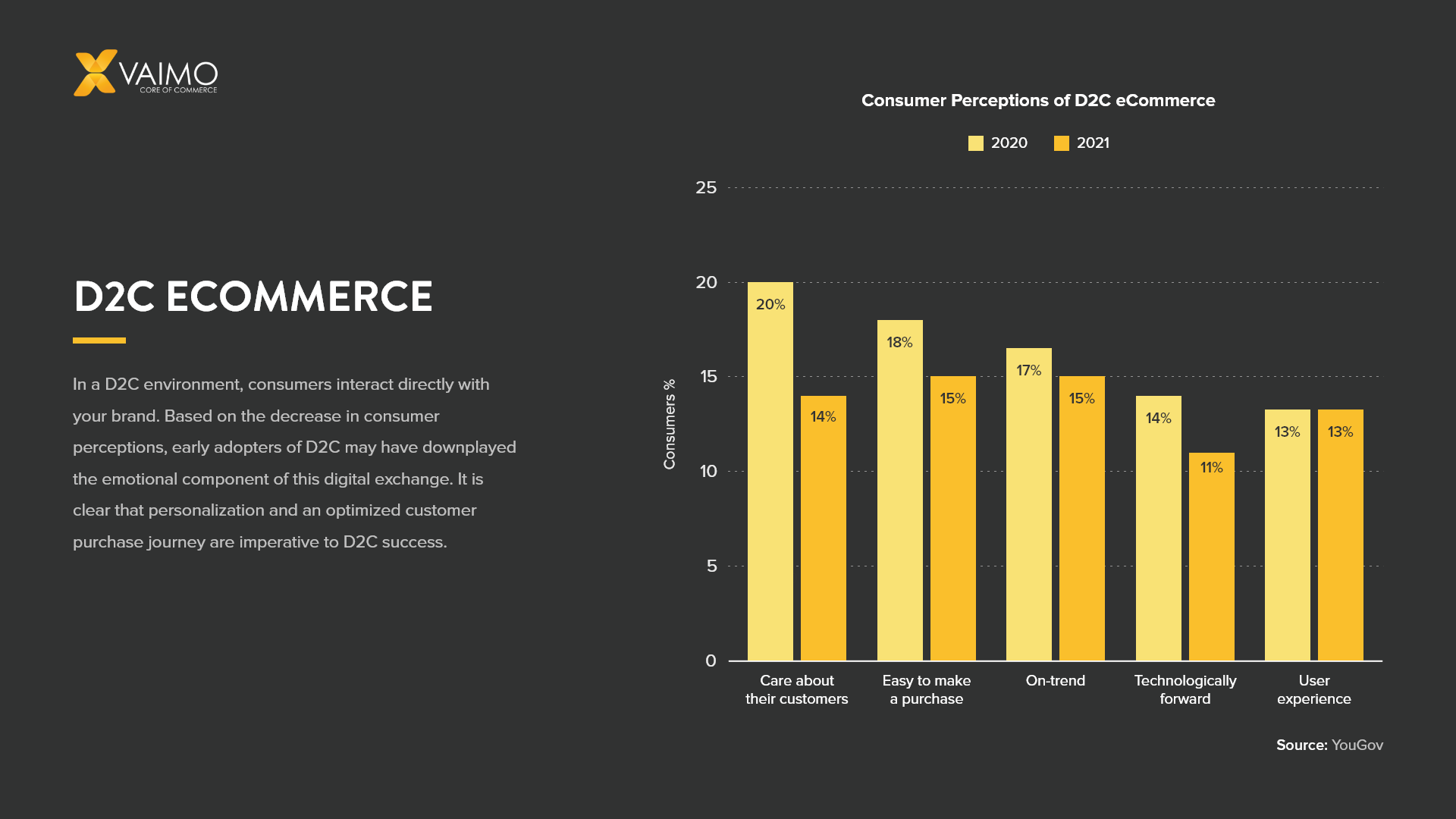D2C Ecommerce Agency vs. Traditional Retail Partner: Which Should You Choose?
Discovering the Prospective of D2C Ecommerce: A Comprehensive Overview for Companies
The D2C ecommerce model offers a considerable change in exactly how brand names involve with customers. It allows business to bypass typical retail channels, fostering much deeper connections and potentially enhanced profit margins. This strategy is not without its intricacies. Recognizing the nuances of D2C ecommerce is essential for brands aiming to prosper. What techniques can they take on to navigate this evolving landscape effectively? The answers may redefine their service methods.
Understanding the D2C Ecommerce Design

Key Advantages of D2C Ecommerce for Brands
The D2C ecommerce design supplies brand names significant benefits, specifically pertaining to boosted earnings margins. By eliminating intermediaries, companies can keep a larger share of sales earnings. In addition, this straight relationship with consumers cultivates improved brand loyalty, encouraging repeat purchases and lasting involvement.
Increased Revenue Margins

Improved Brand Name Commitment
Structure on the financial advantages of D2C ecommerce, boosted brand name loyalty becomes an additional vital benefit for firms involving straight with customers. By developing a direct connection, brands can promote deeper partnerships with their customers, obtaining insights right into behaviors and preferences. This straight communication allows for even more individualized advertising and marketing strategies, which resonate strongly with customers. In addition, brand names have the possibility to control their messaging and consumer experience, enhancing brand worths and building trust. When consumers feel an individual connection, they are more probable to return, advocate for the brand, and join community engagement. Inevitably, boosted brand loyalty not just drives repeat purchases but additionally cultivates an enthusiastic customer base, additional strengthening a brand's position on the market.
Difficulties Faced by D2C Brands
D2C brand names experience a number of substantial difficulties that can impact their success. Stock monitoring concerns can result in equip lacks or excess, complicating procedures and customer satisfaction. In addition, advertising budget restrictions often limit the capacity to effectively involve and reach target audiences.
Stock Management Issues
Efficient stock administration provides an awesome challenge for many brands running in the direct-to-consumer (D2C) area. These brand names typically grapple with changing need, which can lead to overstock or stockouts, eventually influencing consumer fulfillment and revenue. Additionally, the lack of advanced stock radar can lead to disparities between actual supply degrees and reported data, complicating order satisfaction. The diverse series of items D2C brand names commonly use additionally makes complex supply administration, as variants in styles, dimensions, and colors call for even more precise oversight. Additionally, several D2C services might fight with minimal warehousing capabilities, bring about ineffective use of space and resources. Subsequently, efficient inventory management continues to be a critical obstacle for D2C brands going for lasting development and operational effectiveness.
Marketing Budget Constraints
Steering advertising spending plan restraints is a significant obstacle for many direct-to-consumer (D2C) brand names. Limited funds often restrict these firms' capacity to purchase all-encompassing marketing approaches, resulting in lowered exposure in an affordable market. D2C brands often grapple with the demand to make the most of return on financial investment (ROI) while targeting specific target markets efficiently. This challenge is aggravated by increasing prices in digital advertising and the need to allocate funds throughout numerous channels, consisting of social media, online search engine, and e-mail marketing. Subsequently, several D2C brand names need to innovate cost-efficient advertising remedies, leveraging organic development techniques and influencer collaborations. Inevitably, effectively steering these budget constraints is crucial for sustaining development and attaining long-term profitability in the progressing ecommerce landscape.
Techniques for Constructing a Successful D2C Ecommerce Organization
As customers increasingly look for direct links with brand names, establishing a successful D2C ecommerce business needs a tactical method that focuses on client interaction and depend on. One efficient approach is to develop engaging brand name narratives that resonate with target audiences, promoting psychological connections. Utilizing social networks platforms can enhance visibility and assist in two-way interaction, permitting brand names to involve directly with customers.Moreover, customized experiences with tailored marketing efforts can considerably enhance customer retention and commitment. Applying loyalty programs and offering unique offers can even more incentivize repeat purchases.Streamlining the purchasing procedure is necessary, making sure an easy to use user interface that improves the buying experience. Additionally, clear interaction relating to shipping and returns constructs count on and urges customer confidence.Finally, proactively looking for customer feedback and replying to it shows a dedication to enhancement and customer fulfillment, critical components in the affordable D2C landscape.
Leveraging Technology for Boosted Client Experience
In today's competitive D2C ecommerce landscape, modern technology plays an essential role fit client experiences. Businesses progressively use advanced devices such as fabricated knowledge, chatbots, and personalized formulas to improve interactions and streamline the buying process. By incorporating these technologies, brands can give customized product recommendations based on individual preferences and purchasing habits, promoting a more appealing experience.Moreover, responsive site designs and mobile applications ensure that clients can access solutions effortlessly throughout numerous tools. Improved repayment solutions, consisting of digital purses and one-click checkouts, better simplify deals, making it easier for customers to make purchases.Data analytics additionally enables businesses to gather insights right into consumer actions, permitting constant enhancement of offerings and solutions. In general, leveraging modern technology not only enhances customer satisfaction yet likewise cultivates loyalty, inevitably driving lasting success in the D2C ecommerce market.
Marketing Tactics to Drive D2C Sales
Exactly how can brands effectively catch the interest of consumers in a saturated market? To flourish in the direct-to-consumer (D2C) landscape, brands must employ targeted marketing techniques. Making use of social networks systems, brands can engage customers via interactive content, influencer partnerships, and user-generated blog posts. Personalized e-mail campaigns can additionally promote a feeling of connection, providing customized promos based on consumer actions and preferences.Moreover, storytelling plays a vital function in setting apart a brand name's narrative, making it relatable and remarkable. Brand names need to spend in search engine optimization (SEARCH ENGINE OPTIMIZATION) to improve visibility, guaranteeing their items are quickly discoverable online. Additionally, leveraging information analytics permits businesses to fine-tune their advertising and marketing techniques and understand customer fads better. Ultimately, a multi-channel strategy that integrates creativity with data-driven understandings can greatly increase D2C sales, permitting brand names to stand apart in a jampacked market.
Future Trends in D2C Ecommerce
With the quick advancement of technology and customer choices, the future of D2C ecommerce is positioned for considerable transformation. Emerging fads suggest a shift in the direction of hyper-personalization, where brand names take advantage of information analytics to tailor offerings to individual consumer needs. This personalization improves consumer experiences, promoting loyalty and engagement.Moreover, sustainability is ending up being a crucial factor, with consumers increasingly favoring brand names that prioritize environment-friendly practices - D2C Ecommerce Agency. Business are expected to embrace clear supply chains and sustainable materials to satisfy this demand.The combination of expert system and enhanced fact will additionally reinvent the buying experience, enabling customers to envision products in their atmospheres prior to acquisition. Furthermore, social commerce is expected to expand, as platforms like Instagram and TikTok assist in seamless buying experiences straight within social media.These trends jointly symbolize a dynamic future for D2C ecommerce, highlighting customer-centric methods and cutting-edge technologies that redefine consumer interactions
Frequently Asked Concerns
What Industries Benefit Many From D2C Ecommerce?
The present question highlights sectors that thrive through direct-to-consumer (D2C) ecommerce. Incredibly, style, elegance, electronics, and food industries take advantage of D2C versions to raise brand loyalty, improve client relationships, and maximize earnings margins effectively.
Just How Do Shipping Expenses Affect D2C Rates Methods?
Shipping expenses significantly influence D2C prices methods. Services have to balance these costs with competitive prices, considering consumer expectations and revenue margins. Effective management of shipping can enhance customer satisfaction and drive sales in direct-to-consumer designs.
What Payment Choices Should D2C Services Offer?
D2C organizations should use varied repayment options, including credit/debit cards, electronic pocketbooks, and purchase now, pay later on solutions. This variety improves client benefit, boosts conversion rates, and caters to various consumer choices in the on-line shopping landscape.
How Can D2C Brands Manage Customer Returns Effectively?
D2C brands can deal with client returns properly by applying easy to use return policies, using prepaid delivery tags, and making sure punctual refunds (D2C Ecommerce Agency). Clear communication and structured procedures enhance customer satisfaction and motivate repeat service
What Lawful Factors To Consider Exist for D2C Ecommerce Operations?
Legal considerations for D2C ecommerce operations consist of compliance with consumer protection laws, information personal privacy policies, copyright D2C Ecommerce Agency rights, and taxes needs. Brand names have to browse these intricacies to stay clear of lawful pitfalls and guarantee smooth procedures. By removing intermediaries, D2C brands can provide competitive rates and promote a much more intimate connection with their customers.The D2C version is identified by its reliance on electronic systems, making it possible for brand names to utilize social media, online industries, and their very own sites to involve with customers straight. D2C ecommerce promotes the collection of useful client data, enabling brand names to customize their offerings and advertising strategies properly, ultimately driving sales and boosting margins. In addition, brand names have the opportunity to regulate their messaging and customer experience, reinforcing brand name values and constructing trust fund. As customers significantly look for direct links with brands, establishing a successful D2C ecommerce organization calls for a tactical strategy that focuses on client interaction and count on. D2C brand names can handle client returns properly by applying easy to use return policies, using pre paid shipping tags, and guaranteeing punctual reimbursements.